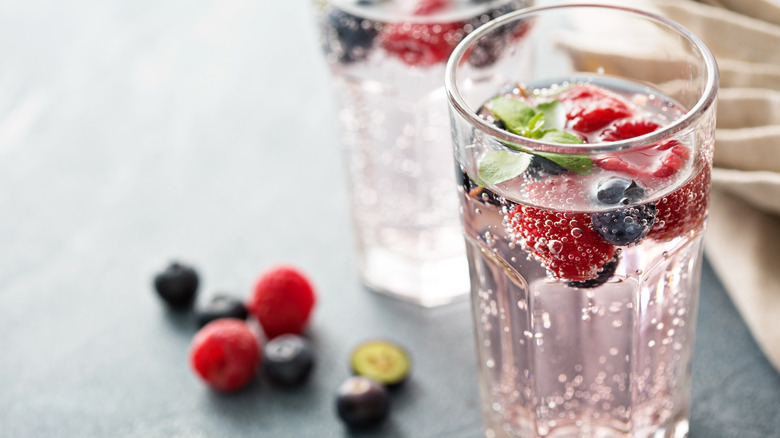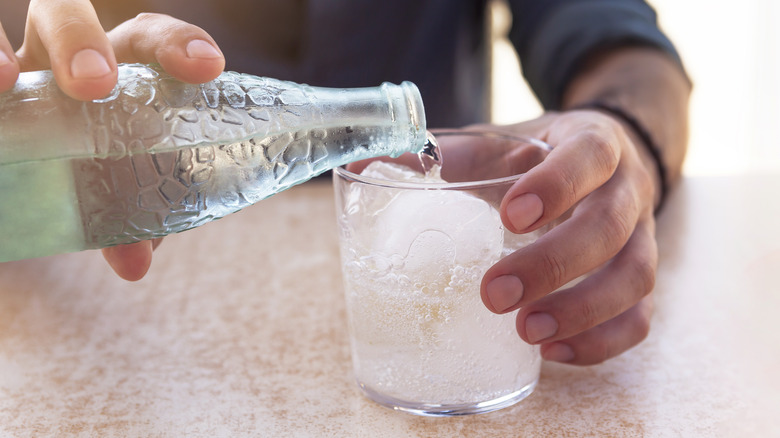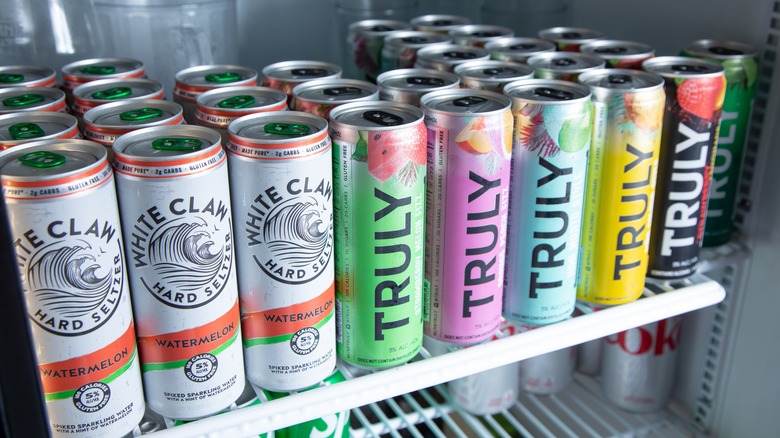The History Of Sparkling Water Is Way Older Than You'd Think
Sparkling water brands like Bubly and Spindrift might have debuted in the 21st century, but the concept of producing bubbly water dates back to before America gained its independence. Natural springs that produce effervescent H2O have existed since the dawn of the Earth, but pumping gas into water became the obsession of an Englishman named Joseph Priestley in 1767.
A minister by trade but a scientist by interest, Priestley's fascination with the subject was piqued during a time when he lived next door to a beer brewery in Leeds. He knew the hoppy aroma emanating from the brewery came from gases — the very gases that produced the bubbles in the beer (a product that is now becoming an increasingly precious resource) next door. He also correctly theorized that they were the same gases found in the naturally aerated spring waters around Europe and North America, which were widely thought to be healing and therapeutic. Priestley wondered if the same kind of fizz could be added to still water.
The short answer is yes, it certainly could, and Priestley successfully made artificial sparkling water, which became a hot commodity shortly after its creation. And bubbly water has certainly withstood the test of time, with more brands offering seltzers and such today than ever before.
Putting bubbles into water
The first thing Joseph Priestley had to figure out was how to produce the gas, or bubbles, that would create the fizz in water. He found that combining sulfuric acid and chalk created carbon dioxide, a substance he placed in pig's bladders and imparted into still water. He documented his findings in a book he titled "Directions for Impregnating Water with Fixed Air," which was awarded the Royal Society's Copley Medal. Sparkling water quickly became the drink of choice for ocean journeys since it tasted better than the fresh water on board, and also became popular in apothecary shops.
A Scotsman named John Nooth further improved the taste of sparkling water by replacing the pig bladders (which he thought gave the water an undesirable flavor) with glass tools for creating fizz. Priestley never developed his own brand of sparkling water or trademarked his findings, so other people and companies were free to commercialize his discoveries, including Johann Jacob Schweppe, who founded the Schweppes Company in 1793, producer of the famous Schweppes Tonic Water. By the dawn of the 19th century, the popularity of seltzers led companies to begin experimenting with artificial flavoring in sparkling water, a trend we still see today.
Sparkling water today
Not only are there hundreds of types of sparkling water and seltzers all over the world, but people can create their own at home at the touch of a button with brands like SodaStream and Ninja. These devices quickly pump carbon dioxide into containers of still water for instant bubbly water. Some sparkling water brands (like Perrier and San Pellegrino) are considered mineral waters and are sourced from naturally effervescent spring waters, while most brands in America are created using Joseph Priestley's method of pumping carbonation into still water, plus any additional flavorings.
The latest development in the world of sparkling water that has taken the market by storm is the interest in hard seltzers (or those that contain alcohol). Baby Boomers and Gen Xers will likely recall the introduction of Zima in the early 1990s — a clear, fizzy, and boozy beverage that created quite the buzz (no pun intended) among yuppies of the time. It quietly fizzled out of popularity, but today, there is no stopping our love for hard sparkling seltzers.
Indeed, both alcohol-free and spiked bubbly waters are a hit (there's even science to explain our desire for them), proving that no matter the age, drinking bubbles is just plain fun.


